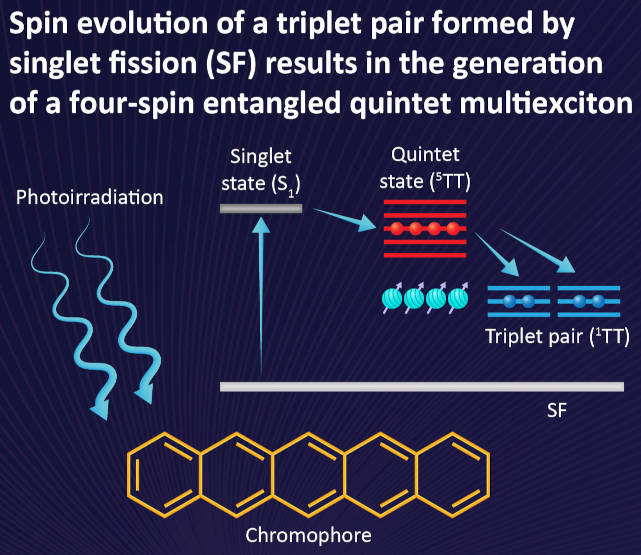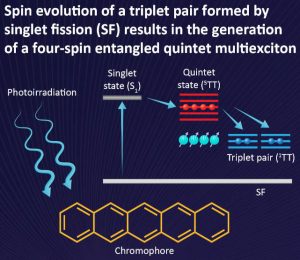
“Their findings mark a crucial advancement for quantum computing and sensing technologies,” according to Kyushu University.
The researchers chose a particular chromophore (a pentacene-based dye molecule) to host electrons whose spins could be entangled, as electrons spins within it can be excited at room temperatures through ‘singlet fission’ (right).
However, quantum coherence among these spins can usually only be achieved at liquid nitrogen level temperatures.
To increase temperature tolerance, the researchers embedded their chromophore within a ‘UiO’ type of metal-organic framework (MOF, left).
“The MOF in this work is a unique system that can densely accumulate chromophores,” said Kyushu engineer Nobuhiro Yanai. “Additionally, the nanopores inside the crystal enable the chromophore to rotate, but at a very restrained angle.”

When excited by microwave pulses, the quantum coherence initiated lasted for more than 100ns at room temperature.
“This is the first room-temperature quantum coherence of entangled quintets,” said fellow researcher Professor Yasuhiro Kobori, of Kobe University.
Now the hunt is on for longer-lasting qubits.
“It will be possible to generate quintet multiexciton state qubits more efficiently in the future by searching for guest molecules that can induce more such suppressed motions and by developing suitable MOF structures,” said Kyushu’s Yanai. “This can open doors to room-temperature molecular quantum computing based on multiple quantum gate control and quantum sensing of various target compounds.”
The work is published as ‘Room-temperature quantum coherence of entangled multiexcitons in a metal-organic framework‘, published in Science Advances.






